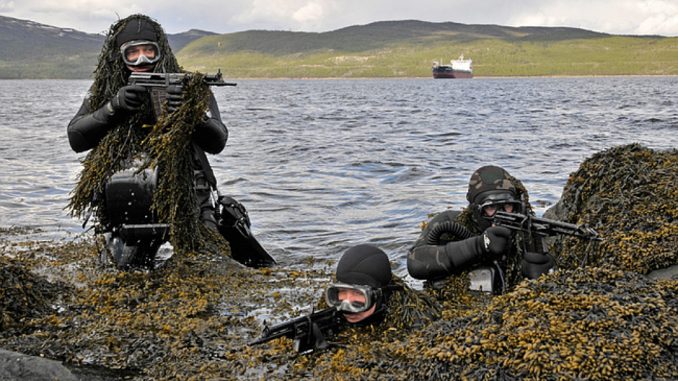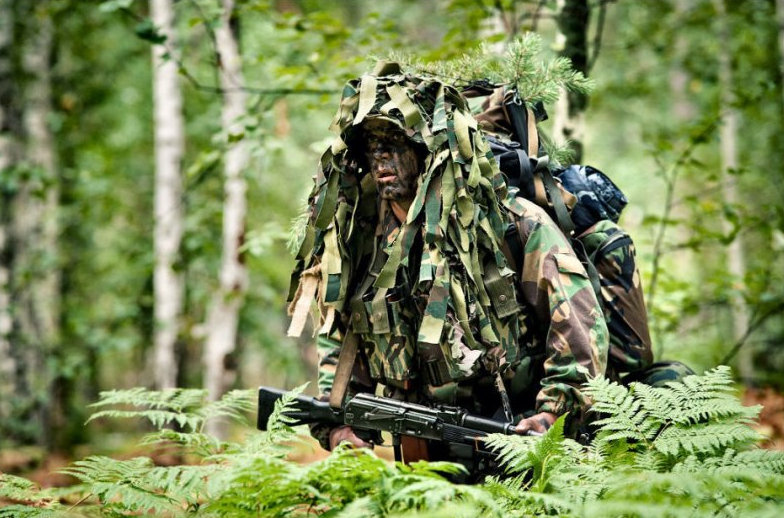
Russian ‘Spetsnaz’ special forces commandos have been in Syria since 2014.
But what are the deadly forces doing there?
Russia Insider explains:

BYPASS THE CENSORS
Sign up to get unfiltered news delivered straight to your inbox.
You can unsubscribe any time. By subscribing you agree to our Terms of Use
Latest Video
Russia reported that a key element in the Syrian conquest of Palmyra in late March 2016 was the presence of Spetsnaz commandos with the Syrian troops.
As expected the Spetsnaz served as ground controllers to call in air strikes by Russian bombers and helicopter gunships. Spetsnaz also used their reconnaissance skills to find ISIL positions and call in Syrian troops or an airstrike.
In one well publicized incident a Spetsnaz man found himself surrounded by ISIL fighters and heroically called in an airstrike on his own position. The killed the Spetsnaz man as well as many ISIL gunmen.
As happened in Afghanistan during the 1980s and Chechnya since the 1990s the Spetsnaz became noted as the most dangerous foe even for fanatical Islamic warriors. What was different in Syria was that Spetsnaz were not used for raids.
Like their Western counterparts Spetsnaz are trained to do reconnaissance (often deep into enemy territory), provide security for very valuable people or equipment and carry out “direct action” (raids). Spetsnaz did this in Afghanistan in the 1980s and in the Caucasus since the late 1990s but not in Syria.
That’s because Russia wants to avoid casualties in Syria as these are very unpopular in Russia. Spectacular victories, on the other hand, are still popular.
Russian Spetsnaz commandos have been in Syria officially since October 2015 and unofficially up to a year earlier. Russia did not say much about what Spetsnaz was doing in Syria, which is standard for special operations forces.
Initially Spetsnaz were there to train their Syrian counterparts and help hunt down and kill ISIL leaders. Any successes there were not publicized, which is, again, pretty standard for secretive commando operations.
It was more difficult to hide the role Spetsnaz played in helping improve the security around senior government officials in Damascus. That operation was also a success.
The Russian commandos are generally similar to their foreign counterparts with one major exception. Russian spetsnaz units contain a lot of conscripts, which is in sharp contrast to Western commandos who are all volunteer careerists. But the Russian spetsnaz conscripts were carefully selected and are volunteers for spetsnaz duty. While these conscript Spetsnaz are closer (in capabilities) to American Rangers, the career Spetsnaz are world class.
The spetsnaz considers these conscripts as potential long-term operators and the short service of these men was considered an extended tryout. The veteran spetsnaz learned to make the most of the constant influx of conscript operators.
Spetsnaz in Chechnya suffered about ten percent casualties for each tour. In Chechnya there were only a few hundred spetsnaz there at a time and when they were there about 80 percent of Chechen casualties were caused by spetsnaz.
The spetsnaz were in Chechnya and Ukraine mainly to collect information on the rebels, locating their camps and travel routes. Artillery or bombers are called in to do the actual attacks.
When the spetsnaz do run into rebel units, they inflicted far more casualties than they took. But the spetsnaz casualties are higher than with their foreign counterparts in large part because of the many conscripts. Often a third or more of the men in a spetsnaz unit in Chechnya and Ukraine were conscripts. It appears that no spetsnaz conscripts were sent to Syria, where the spetsnaz apparently included some of their Syrian counterparts (especially if they spoke Russian) in spetsnaz units.
The original Spetsnaz were organized more like a massive use of SAS (British commandos, the originals) raiding teams. A Spetsnaz brigade of 1,300 men could field about 100 8-10 man teams. A Spetsnaz company had 135 men further divided into 15 independent teams. Since the 1990s the lower level (company and below) organization appears to have remained unchanged.
There are many different Spetsnaz organizations in Russia. The army has most of them but the navy, national police, Foreign Ministry and intelligence services all have Spetsnaz detachments that specialize in doing what their organization requires.
Thus there are Spetsnaz who can carry out amphibious operations or protect embassies and diplomats overseas. There is even a special Spetsnaz detachment of super-snipers who can also be used to find and kill exceptionally effective enemy snipers.


